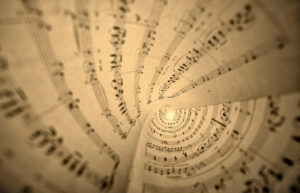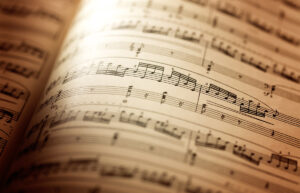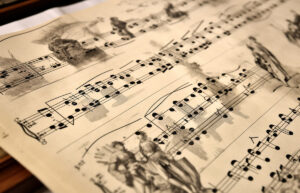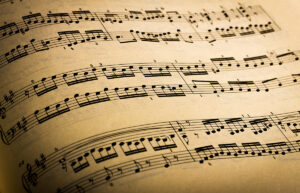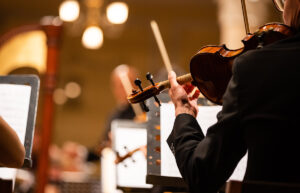What is a Modulation in Music: Definition, Symbols, Types, Genres & Examples

Ever felt the exhilarating shift in mood when listening to a piece of music that takes an unexpected turn? That’s the magic of modulation. Imagine navigating through a sonic landscape where the keys change, creating a thrilling journey for your ears. Buckle up as we explore what is a modulation in music, terms and symbols used, its need, types, and examples.
Welcome to TheDemoStop, now join the community!
Connect with artists, fans and producers around the world.
What is a modulation in music?
Modulation in music involves a fundamental technique where a piece transitions from one key to another. This intentional shift in the tonal center introduces a fresh palette of harmonies, altering the mood and texture of the composition.
Modulations can serve various purposes, such as creating tension, resolving musical phrases, or providing a sense of journey within the musical narrative. Composers strategically employ this technique to add depth and complexity, enhancing the music’s overall expressiveness and artistic impact.
Terms and symbols in modulation music theory
Understanding “what is modulation in music” also involves familiarizing oneself with different terms and symbols used in modulation, beginning with how chords are depicted on the staff.
Chords are symbolized using Roman numerals, with uppercase denoting major chords and lowercase indicating minor chords. These numerals represent the chord’s position within the key it’s played in.
For example, in the key of C major, a C major chord is represented by “I,” also known as the tonic, referencing the starting note of the scale. The subdominant chord, based on the fourth note of the scale, is denoted by “IV” or “iv” for major or minor, respectively. Similarly, the dominant chord, derived from the fifth note of the scale, is symbolized by “V” or “v.”
What is the need for modulation in music?
Size of antenna
Modulation plays a pivotal role in the transmission of music, analogues to the role of the antenna’s size in communication systems. Just as the antenna determines the efficiency of signal reception, modulation allows musicians to transmit their artistic intent effectively. It shapes the music’s form, ensuring it reaches the listener with clarity and impact.
Wireless communication
In the wireless world of musical expression, modulation acts as the medium through which composers convey their messages. Analogues to wireless communication channels, modulating between keys facilitates the transmission of varied emotional nuances and thematic elements, establishing a dynamic and engaging musical dialogue.
Create variety and interest
Similar to how variety and interest are crucial in keeping an audience engaged, modulation injects vitality into musical compositions. By changing keys, it introduces new harmonies, textures, and tonal colors. This variety captivates the listener, preventing monotony and providing a sense of musical exploration.
Convey emotion
Just as emotions are the heart of human communication, modulation is the heartbeat of music. It allows composers to convey a spectrum of emotions by navigating through different keys, each reasoning with its unique mood. Whether it’s the warmth of a major key or the melancholy of a minor, modulation is the emotional palette that paints the sonic canvas.
Types of modulation in music
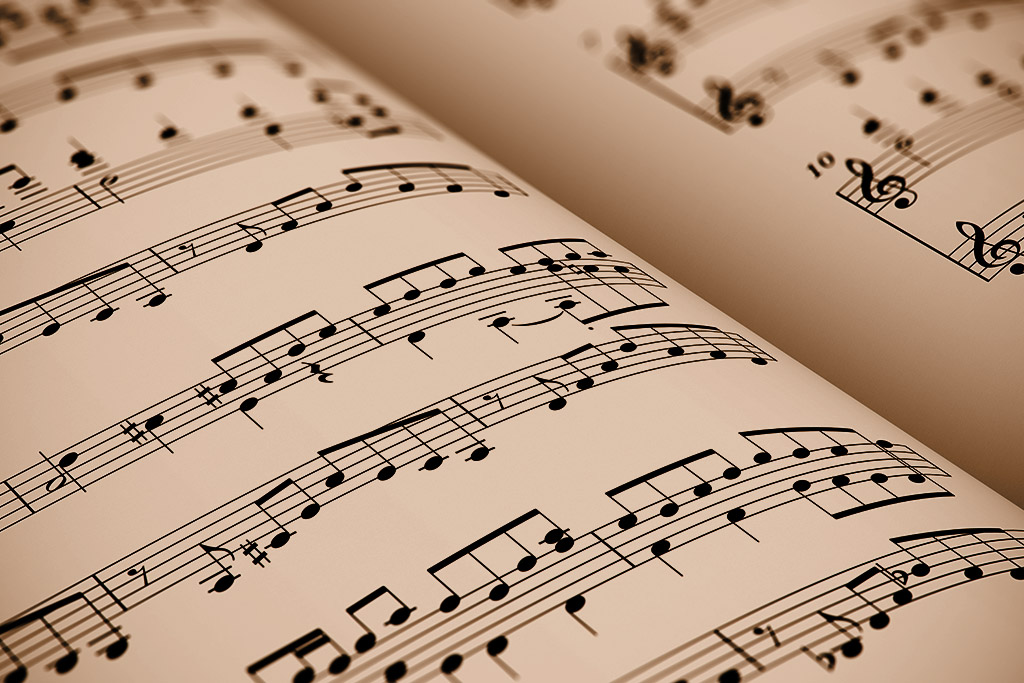
To understand what is a modulation in music, we have to look at its different types that open a door to the intricate world of harmonic transformations and tonal exploration.
Direct modulation
Direct modulation involves an abrupt shift from one key to another without any intermediary chords. It creates a bold and immediate change, often adding a dramatic touch to the musical narrative.
Common tone modulation
Common tone modulation utilizes shared tones between two keys to smooth the transition; these shared notes act as a bridge, providing a seamless connection between the old and new tonal centers and enhancing cohesion in the modulation process.
Chain modulation
In chain modulation, multiple key changes occur in succession, creating a sequence of modulations. This technique adds complexity and a sense of progression, leading the listener through a series of harmonic transformations.
Diatonic modulation
Diatonic modulation involves transitioning between keys that share the same diatonic scale. This modulation type maintains a natural and harmonically smooth progression, commonly found in classical and traditional music.
Chromatic modulation
Chromatic modulation introduces chromatic notes, altering the traditional diatonic structure. This technique allows for more adventurous and unconventional key changes, often associated with heightened emotional expression.
Welcome to TheDemoStop, now join the community!
Connect with artists, fans and producers around the world.
Parallel modulation
Parallel modulation shifts between keys that share the same tonic but differ in mode (e.g., major to minor). This type of modulation creates a distinct change in mood while maintaining a sense of familiarity through the common tonic.
Sequential modulation
Sequential modulation involves moving from one key to another in a stepwise, sequential manner. This gradual transition provides a smooth and calculated modulation, offering a sense of anticipation and inevitability.
Pivot chord modulation
Pivot chord modulation employs a chord that exists in both the current and target keys, serving as a pivot point for the modulation. This shred chord facilitates a seamless transition, connecting the two tonal centers harmonically.
Enharmonic modulation
Enharmonic modulation occurs when the same pitch is represented by different notes in notation but sounds identical. This allows for a subtle modulation with minimal perceptible change in tonality.
Altered common tone modulation
Altered common tone modulation refines the common tone technique by incorporating modified or altered tones to enhance the harmonic connection between keys. This variation adds a layer of sophistication to the modulation process.
Modulation in different musical genres
Classical music
In classical music, modulation is a cornerstone of compositional techniques. Composers often employ carefully crafted modulations to convey different emotions, highlight structural elements, and provide a sense of journey within larger musical forms such as sonatas and symphonies.
Pop music
Modulation in pop music serves to enhance dynamics and maintain listener engagement. It’s often used to create climatic moments in the chorus or bridge sections, injecting energy and excitement. Pop songs commonly feature straightforward and accessible modulations to appeal to a broad audience.
Jazz music
Jazz embraces modulations for improvisational exploration and harmonic complexity. Musicians in jazz frequently navigate through various keys, using modulations to introduce tension and release. The genre’s flexible nature allows for intricate modulations, contributing to the spontaneity and creativity of jazz performances.
Country music
Modulation in country music is often employed to evoke a range of emotions, from nostalgia to celebration. Commonly found in country ballads and upbeat tunes, modulations help convey the narratives of the lyrics and add a distinctive flavor to the genre’s harmonious palette.
Rock music
In rock music, modulations are utilized to amplify the emotional impact of a song. They can be subtle or dramatic, with key changes often aligning with shifts in lyrical theme. Rock musicians use modulations to build tension and provide resolution, contributing to the genre’s dynamic and expressive nature.
Examples of modulation in music
Examples help you better understand what is modulation in music, so here are a few songs that might make you easily conclude modulations in music.
“Hey Jude” by The Beatles
In “Hey Jude,” The Beatles employ a bold modulation during the extended outro. The transition from F to Bb adds a powerful lift to the song, enhancing the emotional impact. This modulation contributes to the anthem-like quality of the track, making it a memorable and timeless piece.
“Bohemian Rhapsody” by Queen
Queen’s “Bohemian Rhapsody” is a masterpiece of musical innovation. The song features several modulations, notably during the operatic section, where Freddie Mercury guides the listener through diverse keys. These strategic modulations contribute to the song’s unpredictable and theatrical nature.
“I Will Always Love You” by Whitney Houston
Whitney Houston’s rendition of “I Will Always Love You” showcases a poignant modulation. As the song reaches its emotional peak, a key change from B major to D major intensifies the heartfelt delivery. This modulation enhances the climatic moments, leaving a lasting impression on the listener.
“All I Want for Christmas Is You” by Mariah Carey
Mariah Carey’s holiday classic, “All I Want for Christmas Is You,” features a subtle modulation in the bridge. The key change from G major to A major adds a sense of joy and anticipation, perfectly complementing the festive and celebratory mood of the song.
“Man in the Mirror” by Michael Jackson
Michael Jackson’s “Man in the Mirror” incorporates a strategic modulation during the final chorus. Shifting from Bb major to C major, this key change elevates the song’s inspirational message and reinforces the uplifting atmosphere. The modulation serves as a powerful musical tool, emphasizing the call for positive change.
Welcome to TheDemoStop, now join the community!
Connect with artists, fans and producers around the world.
Conclusion
What is a modulation in music?
Modulation is the intentional transition from one key to another within a musical composition, altering the tonal center and contributing to the music’s harmonic variety and expressive depth.
Terms and symbols in modulation music theory
Understanding modulation in music theory involves learning chord representation on the staff using Roman numerals. Major chords are denoted by uppercase letters, while minor chords use lowercase. For example, in C major, the tonic chord is represented by “I.” Based on the fourth note, the subdominant chord is denoted by “IV” or “iv” for major or minor, respectively.
What is the need for modulation in music?
- Size of antenna
- Wireless communication
- Create variety and interest
- Convey emotion
Types of modulation in music
- Direct modulation
- Common tone modulation
- Chain modulation
- Diatonic modulation
- Chromatic modulation
- Parallel modulation
- Sequential modulation
- Pivot chord modulation
- Enharmonic modulation
- Altered common tone modulation
Modulation in different musical genres
- Classical music
- Pop music
- Jazz music
- Country music
- Rock music
Example of modulation in music
- “Hey Jude” by The Beatles
- “Bohemian Rhapsody” by Queen
- “I Will Always Love You” by Whitney Houston
- “All I Want for Christmas Is You” by Mariah Carey
- “Man in the Mirror” by Micahel Jackson
FAQs
What is a modulation in music?
Modulation in music is the deliberate change from one key to another, enhancing harmonic variety and expressive depth within a composition.
What are the types of modulation in music?
- Direct modulation
- Common tone modulation
- Chain modulation
- Diatonic modulation
- Chromatic modulation
- Parallel modulation
- Sequential modulation
- Pivot chord modulation
- Enharmonic modulation
- Altered common tone modulation
What songs use modulation?
Songs that use modulation include:
- “Hey Jude” by The Beatles
- “Bohemian Rhapsody” by Queen
- “I Will Always Love You” by Whitney Houston
- “All I Want for Christmas Is You” by Mariah Carey
- “Man in the Mirror” by Micahel Jackson
What is direct modulation?
Direct modulation in music involves an immediate and abrupt shift from one key to another without intermediary chords, creating a bold and instantaneous change in the tonal center.
What is common chord modulation?
Common chord modulation in music involves transitioning between two keys by using a shared chord as a harmonic bridge, creating a smooth and connected modulation.
What is diatonic modulation?
Diatonic modulation in music refers to a key change that occurs within the same diatonic scale, maintaining a natural and harmonically smooth progression.
What is the need for modulation in music?
- Size of antenna
- Wireless communication
- Create variety and interest
- Convey emotion
What are the terms and symbols of modulation in music?
In music theory, chords are represented on the staff using Roman numerals. Major chords are uppercase, and minor chords are lowercase. For instance, in C major, the tonic chord is “I,” the subdominant is “IV” or “iv,” and the dominant is “V” or “v.”
What are the modulations in different musical genres?
- Classical music
- Pop music
- Jazz music
- Country music
- Rock music



















